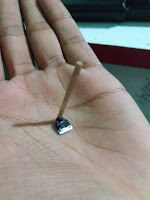from arstechnica.com What do you think about that? Niels Bohr said that electrons were travelling in circular orbits. But today, we know that electrons are traveling in orbitals . I think before we answer the question, we have to talk about the structure of electrons. There are many energy levels in an atom. In each energy level, there are orbitals . There are four types of orbitals, we call s, p, d, f. When we talking about first energy level, there is only one “s” orbital. Then the second energy level, there are two orbitals called “s” and “p”. ( I’m only talking about s and p orbitals in this post. ) Every electron moving in their orbitals. So, we can’t tell where is the electron at the moment without catching it. But we can mark a specific area (That is what I called orbital.) and tell “the electron can be anywhere in this orbital.” In other words, the possibility of an electron can be from Wikipedia anywhere in orbital is one. By studying their wave funct...



